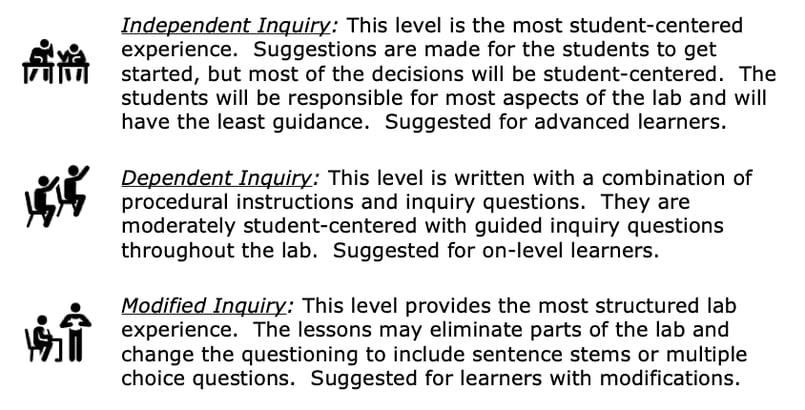Weather Map Inquiry Lab
Middle School Inquiry Lab on Weather Maps
In this lab students will read weather forecasts and identify the factors that contribute to the resulting weather. Students will create a weather map with this information.
Each inquiry lab will contain an essential question that will drive the lesson and make students think. For this lesson, the essential question is:
- What global and regional factors influence local weather?
BACKGROUND INFORMATION AND MATERIALS LIST:
Students will begin the lab by reading the essential question and background information. This can be done individually, as lab groups, or as a whole class. If you consider lab groups, you also might include some type of whole class formative checks before digging into the lab.

Materials List:
- colored pencils
- 2 highlighters of different colors
- internet access
PROCEDURE:
For this lab, make sure that students have internet access, as the first portion of the lab will utilize an interactive website. In the first part, students will access a website that will show multiple filters regarding the Earth. One of those filters is wind currents. Following the direction given on the lab sheet, students will observe certain areas and the direction from which the wind originates. Then students will be asked to apply a temperature filter to see how warm or cool those winds are.
In the second part, students are given a series of weather forecasts and will have to highlight the certain air pressure that contributes to those forecasts. Students will take this information and will add pressure symbols to their map of the United States. Students will also have to identify warm or cold fronts, as well as where the air masses are moving.
In the last part, students will analyze three weather maps and will explain weather patterns that took place over the three days. Students also will explain what the cause of certain weather situations was which were indicated on the maps.
CHECK FOR UNDERSTANDING:
At this point in the lab, students will be checked for understanding by answering questions about their findings. Here are a few that come with the lab:
- On your map, are high pressure systems following behind or moving ahead of fronts?
- Describe the weather experienced when one air mass meets another.
CONCLUSION
Students will go back to the essential question and write a CER (Claim, Evidence, Reasoning) to conclude the lab. Once completed, students will reflect back on their learning by answering the following question:
- Choose an area of the map and write a story about the weather that happened over those three days as though you were someone living in that area.
MODIFIED AND INDEPENDENT INQUIRY VERSIONS
All of the Kesler Science inquiry labs come with three different modification levels. Each lab is differentiated using the icons below.
STANDARDS ALIGNMENT
TEKS: 8.10B – Identify how global patterns of atmospheric movement influence local weather using weather maps that show high and low pressures and fronts.
NGSS: MS-ESS2-5 – Collect data to provide evidence for how the motions and complex interactions of air masses results in change in weather conditions.

Download Over $100 in FREE Resources
For Middle School Science
Simply create a login below and gain immediate access to a selection of our Kesler Science product line worth $100 - for FREE. There's a full version of every product type! You'll also join tens of thousands of middle school science teachers who receive timely tips and strategies straight to their inbox.





